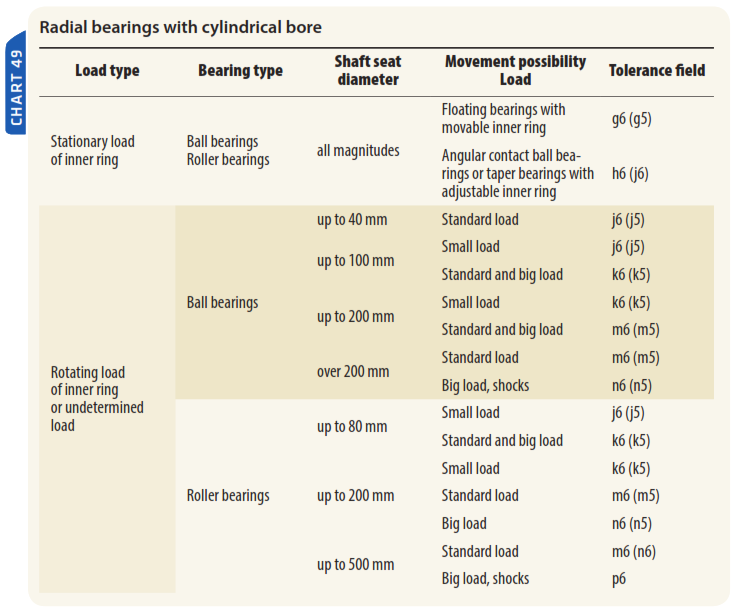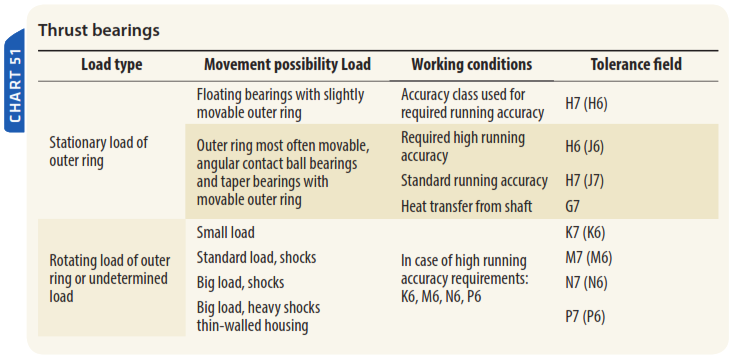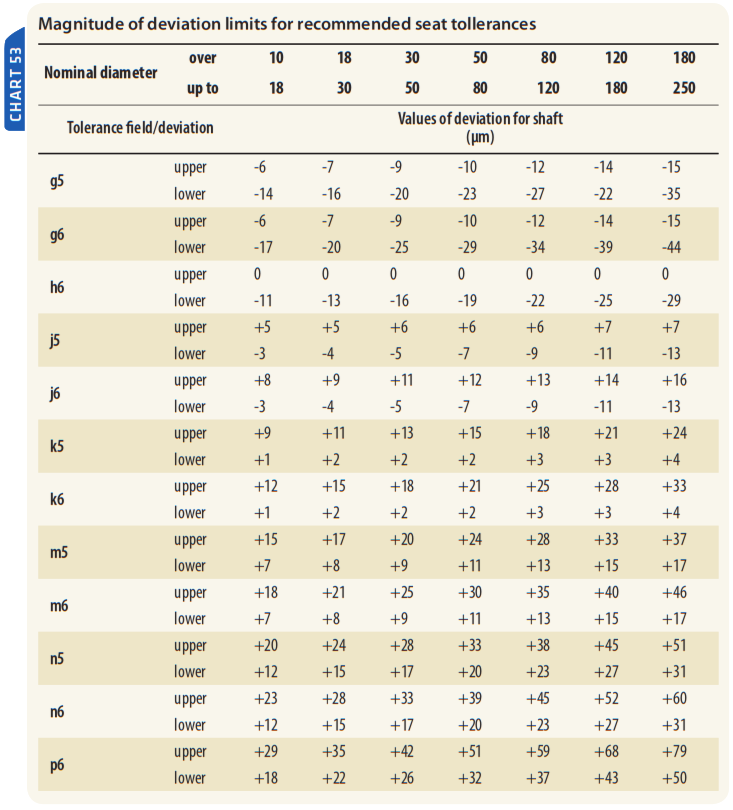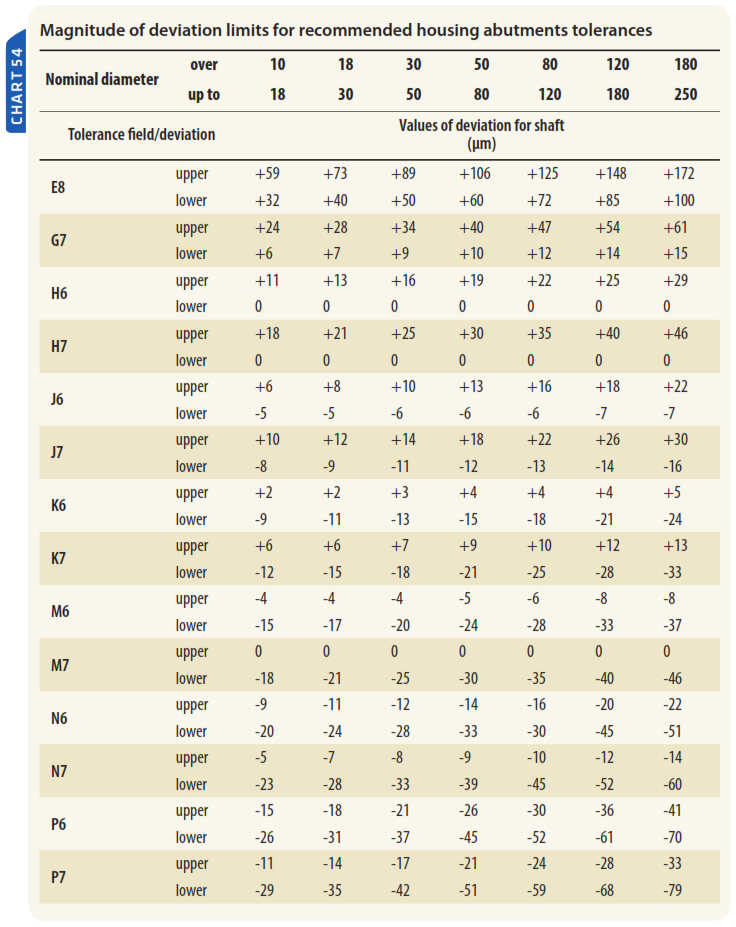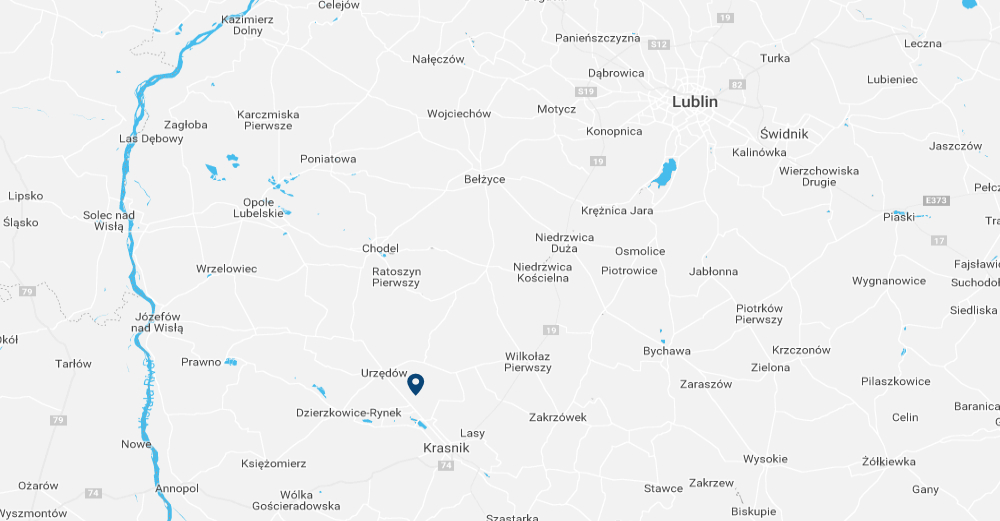Rolling bearings storage
Rolling bearings are product which is susceptible to a corrosion so it needs appropriate storage and packaging conditions which protects them from environmental factors. Warehouse where bearing are stored have to ensure constant temperature with no daily fluctuations.
Also separated storage areas for bearings in other material stockrooms should provide same conditions. Special attention should be paid to isolate rooms where substances that are steel reacting substances are kept such as: acids, salt, fertilizers etc. The temperature in the warehouse should be kept in between 15 + 25°C on yearly basis, providing daily fluctuations are not greater than 3°C. Humidity should be kept under 70% relative humidity.
Storage of bearings without direct packaging is forbidden.
Rolling bearings should always be preserved and tightly packed.
Rolling bearing without packaging or with damaged packaging along with contaminated bearing (dust, sand etc.) should undergo preservation.
Periodic inspection of rolling bearings
Bearings stored in warehouses should be periodically inspected to check whether tarnish did not occurred. Bearings in original packaging should be inspected every 12 months, repacked bearings every 6 months. During inspection cleanliness should be kept and bearings must not be touched by bare hands – it could inhibit the corrosion.
Proper conditions of operation
Correctly chosen, mounted and operated bearing should run smoothly, rotate effortlessly, without noises and noticeable clearance. With time some signs of wear may occur.
Usual symptoms are: increased noise, non-smooth rotation, increased temperature or larger clearance. Standard signs of bearing life end is flaking on raceways and rolling elements.
It is a result of material fatigue which occurs after reaching certain number of revolutions under specific load. Bearings can also loose its usability for further work due to damages that occurred during improper operation. The main causes are usually improper operation, bad mounting, inappropriate lubrication, corrosion etc.
Operation of damaged bearing is prohibited since it can cause housing and shaft damage or damage of other elements of the machine.
Washing, preservation and storage of rolling bearings
Bearings are permanently covered with thin and even layer of provisional preservative agent. Bearings and bearings element stored in warehouses for a longer period of time would be washed and preserved if the original packaging would be damaged or when the provisional agent lifespan come to an end.
Selection of fit
One of the basic factors which decides of appropriate bearing work is its proper fit on the shaft and in the housing.
Proper fit of bearing on shaft and in the housing should ensure:
- ease of bearing mounting and demounting,
- prevention from bearing rotation on the shaft or in the housing,
- allow bearing movement in axial direction in case of floating bearing i.e. this which do not fix the shaft in axial direction.
Tolerance of outer diameters and bores are according to international standard. Appropriate bearing fit is achieved by tolerance zone selection from standard ISO system for bores and shafts.
Basic rule for fit selection is securing bearing rings from sliding on the mounting surfaces. That is why the most effective type of fit is a bearing rings close fit. Thanks to close fit rings adhere to shaft shoulder and housing on its whole diameter, which allows to fully use bearing load carrying capability.
In some cases – especially when using non-separable bearings – the close fit of both rings can cause serious mounting problems and moreover could led to clearance elimination and bearing stoppage.
Furthermore, the closer the fitting is the greater the accuracy of bearing mounting area is needed, what increases the mounting parts manufacturing cost. Those factors causes that the fits selection should be preceded by detailed technical analysis which takes into consideration bearing’s real operating conditions:
- type of rings load,
- value and load characteristics,
- type and size of bearing,
- temperature distribution,
- possibility of axial movement for floating bearing,
- ease of bearing mounting and demounting,
- design and material of shaft and housing,
- required working accuracy.
Influence of those particular factors on proper fit selection has been discussed below.
Type of rings load
There can be distinguished 3 types of ring loads: stationary, rotating and oscillating.
Stationary load of the ring is a load that is constantly carried by the same part of the raceway and associated area of mounting surface of shaft’s neck or housing. This type of load occurs when ring is stationary with regard to non-rotating load which is acting or when the ring and load rotates together.
Rotating load of the ring is a load which line of actions go through all points on the raceway circumference. This type of load occurs when ring is rotating with regard to non-rotating load or when the load is rotating with regard to stationary ring.
Oscillating load of the ring is a load which changes its rotation direction or the rings are performing similar. Oscillating load occurs also when independently of spot load the rotating load occurs.
Bearings load cases
Three basic load cases can be distinguished when considering overall working conditions of the bearing.
The most common case is rotating load of inner ring with simultaneous stationary load of outer ring.
This case occurs when inner ring rotates with respect to stationary load and stationary outer ring. E.g. all types of gearboxes (Fig 29 I a). It also occurs when inner ring is stationary but load applied to outer ring is rotating along with it, e.g. in case of large unbalanced eccentric (Fig. 29 I b).
Case of rotating inner ring requires close fir of this ring.
Second case occurs when stationary load acts on inner ring and rotating load acts on outer ring. This happens when fixed direction load acts on stationary inner ring while outer ring is rotating e.g. in non-driven car wheels, idler wheels etc. (Fig. 29 II a).
It also happens when load is rotating along with inner ring while outer ring is stationary, e.g. unbalanced eccentric rotating along with shaft (Fig. 29 II b).
This case requires close fit of outer ring, the inner ring can have more loose fit.
Third case occurs when the direction of load of both rings changes, e.g. when rotating or oscillating loads act on both rings. Example of such load cases of bearings are vibrating machines, vibrating frames etc. (Fig. 29 III a and b).
This case requires close fit of both rings which often cause severe mounting problems. The best solution in this case are separable bearings (tapered roller bearing, cylindrical roller bearings) which allow for separate mounting of each ring.
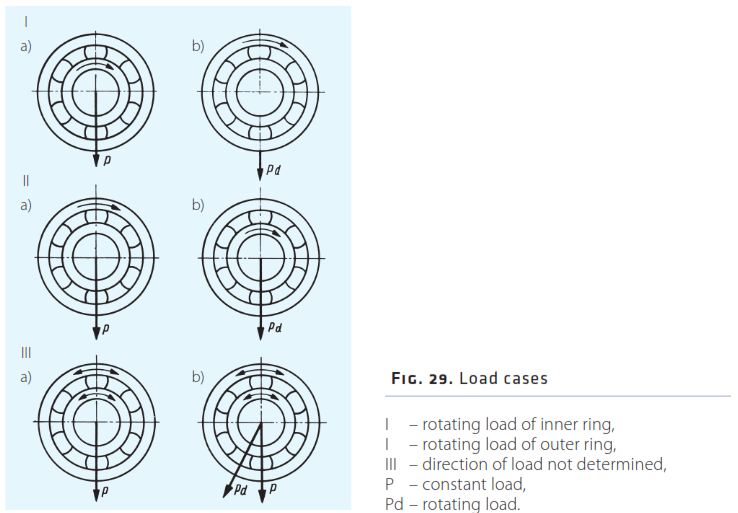
Value and load characteristics along with bearing type and size
Value and load characteristics also have influence on shaft and housing fit selection as well as on bearing type and size. In general, the following should be bear in mind:
- bearings with high values loads or working under dynamic loads are closely fitted than light loaded bearings;
- roller bearings are more closely fitted than ball bearings;
- angular contact and thrust bearings are more closely fitted than radial bearings;
- bigger sizes bearings are more closely fitted than smaller ones;
- usually, bearings are close fitted on shaft, on the other hand housing fit depends whether bearing carries only radial load or complex loads, so:
- thrust ball bearings, which only can carry axial loads, always operate with radial bearings. In order to avoid stress, outer rings of thrust ball bearings should have proper loose fit as not to touch housing bore;
- similar loose fit should be incorporated when mounting in housing the following types of bearings: deep groove ball bearings, angular contact ball bearings, spherical roller thrust bearings if they are meant to carry only radial loads. Cylindrical roller thrust bearings are an exception, they should be close fitted in the housing bore due to their possibility of free movement in radial direction;
- fit for angular contact ball bearings and spherical roller thrust bearings that carry complex loads should be selected using the same rules as for radial bearings.
Temperature distribution
Temperature differences and heat transfer direction between bearing rings and co-acting elements (housing, shaft) should be carefully analysed during fit selection.
In general, bearing rings have bigger temperature than co-acting elements of the machine. This could cause fit of inner ring on shaft to loosen or tightening of outer ring in the housing which can lead to constrictions of this ring axial movement.
Possibility of bearing axial movement
During fit selection the fact whether bearing retain shaft with relation to housing in axial direction or it is free floating should be taken into consideration. Floating bearings should be mounted in such way that its ring could move if there is such need – e.g. due to thermal expansion of the shaft.
Type of load case that is occurring decides which ring should allow this movement.
Ease of mounting and demounting
Usually in case when one of the rings of non-separable bearing can be loosely fitted the mounting and demounting do not cause any problems.
But when due to operating condition and load case both rings need close fit it is advised to incorporate separable bearings or bearings with tapered bore mounted directly on the tapered shaft or mounted using special sleeve.
Design and material of shaft and housing
Recommended fit types that are common in publications usually relate to cases when bearings are mounted on a solid shafts and in standard thickness steel or cast-iron housings where situations such as shaft diameter decrement or bore enlargement of the housing due to close fit do not occur.
In case of bearing mounting on hollow shafts, in thin-walled housings or light alloys housing the closer fits than for solid shafts and standard housings should be used.
Required working accuracy
Close fit should be used in case of high working accuracy requirements in order to avoid vibrations.
Beside keeping within boundary dimensionsof shaft and housing it is very important tokeep within requirements of shape accuracy of those mounting surfaces as well as mounting perpendicularity of surfaces adjacent to bearings faces. It is particularly important in case of large revolutions and when the accuracy and flawless bearing work is essential, e.g. in machining centres spindles. Recommended accuracies of geometrical parameters shown in Fig. 30 are given in Chart 47.

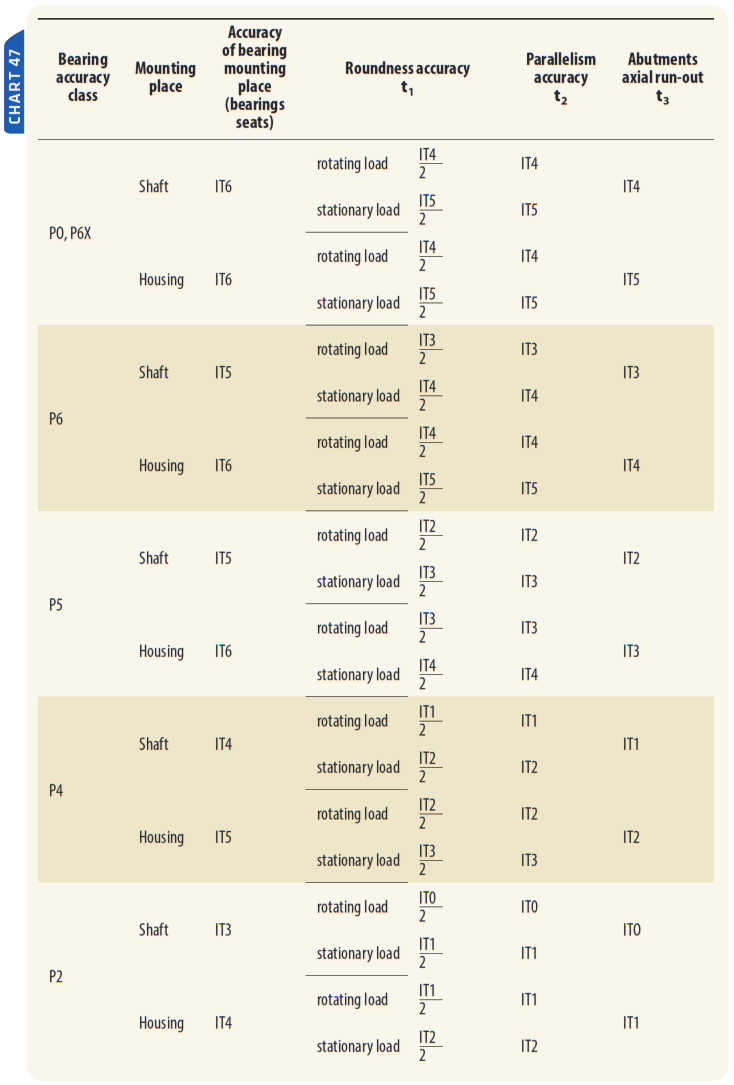
Tapered bore bearing fit
Bearings with tapered bore are usually used in order to simplify mounting and demounting. They can be mounted directly on the tapered shaft or using withdrawal sleeves seated on the cylindrical shaft.
Fit of the inner ring on the tapered shaft is dependant on amount of axial displacement of ring on the taper. When mounting tapered bore bearings it should be bared in mind that due to ring movement on the taper the bearing internal clearance decreases.
The fi t of outer rings of tapered bore bearings is assumed as for bearings with cylindrical bore. For bearings mounted using withdrawal sleeve greater tolerance for shaft can be used (h9 and h10), but shape tolerances i.e. cylindricity, taper tolerance should be within tolerance IT4⁄2 and IT4⁄2 limit and should be always checked before mounting.
General hints on proper fi t selection for seats and abutments has been shown in charts 49-52. Chart 44 presents tolerance values (IT) acc. to ISO, charts 54-54 present values of deviation limits of recommended shaft and housing tolerances.

